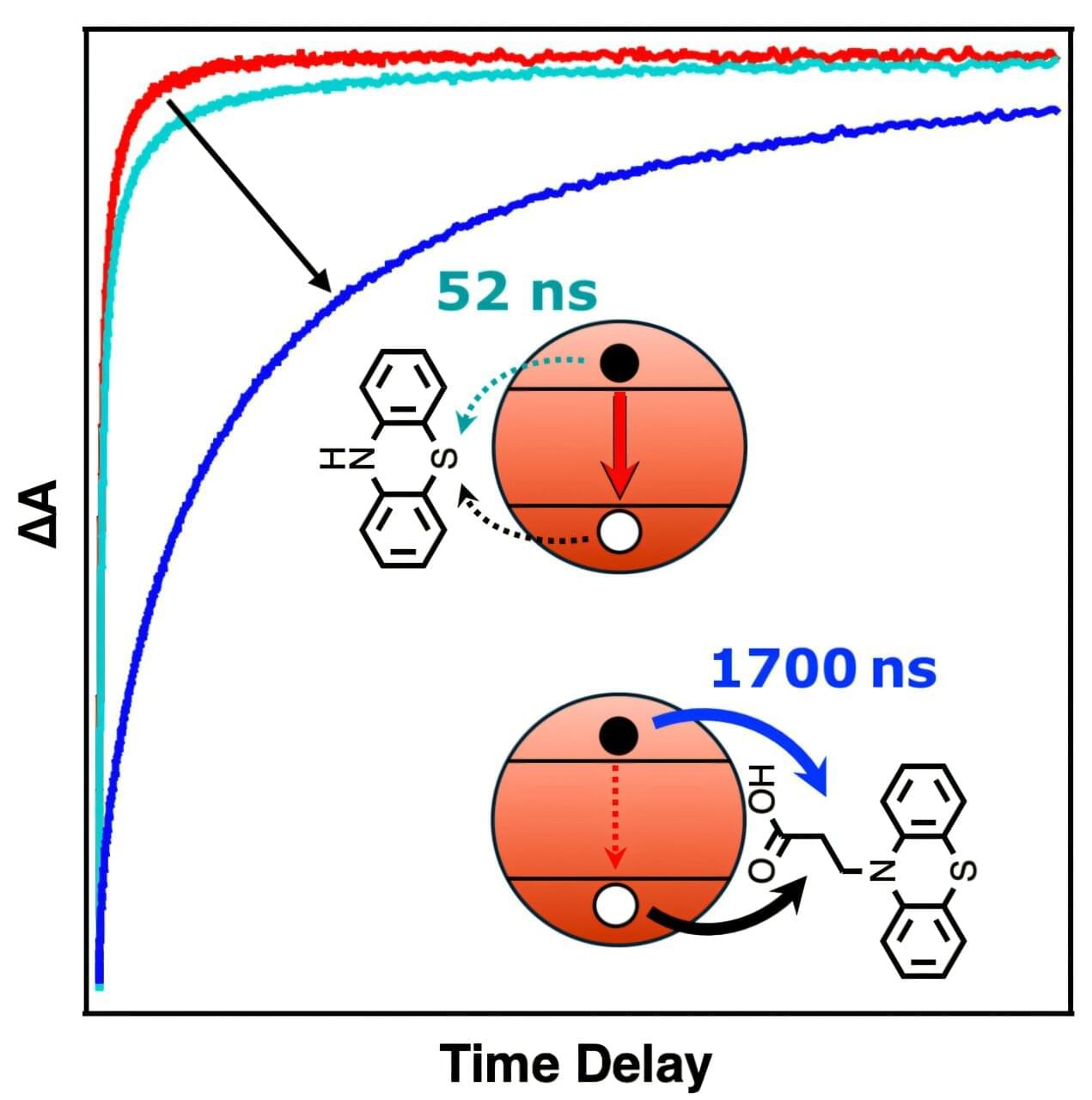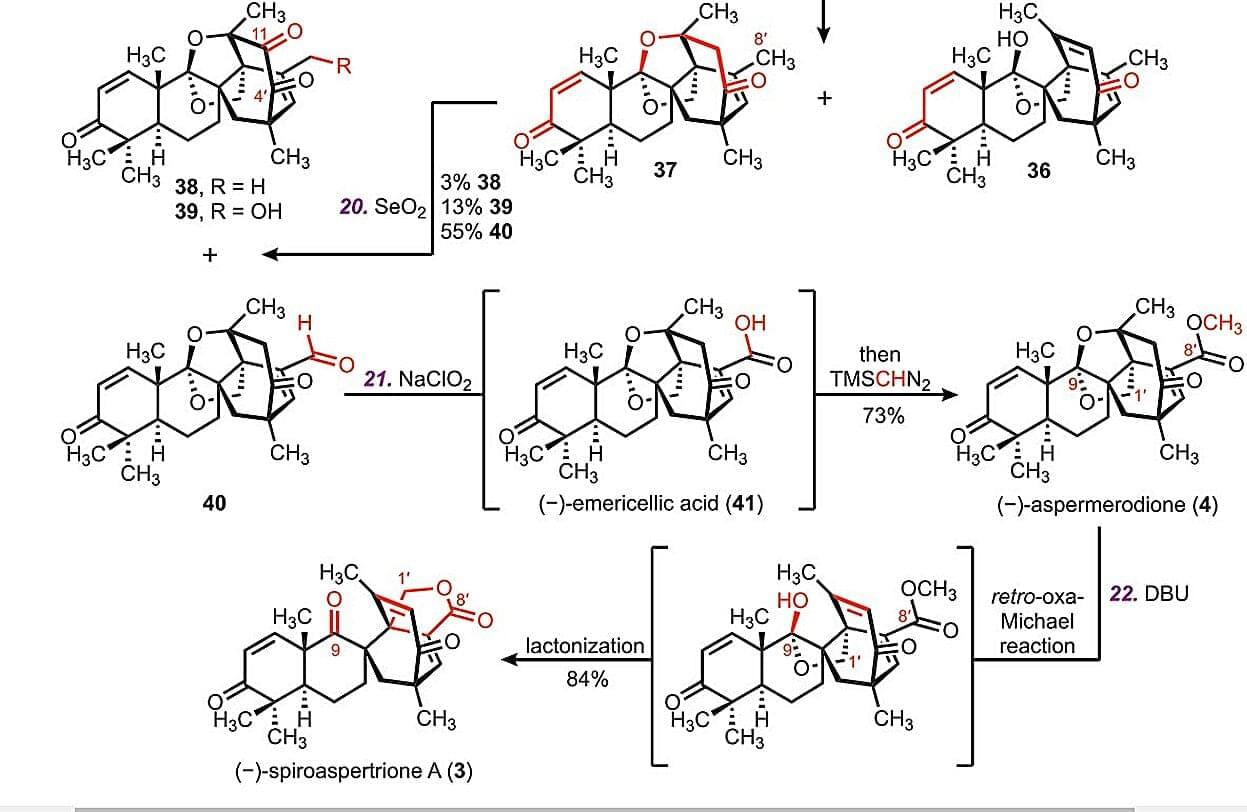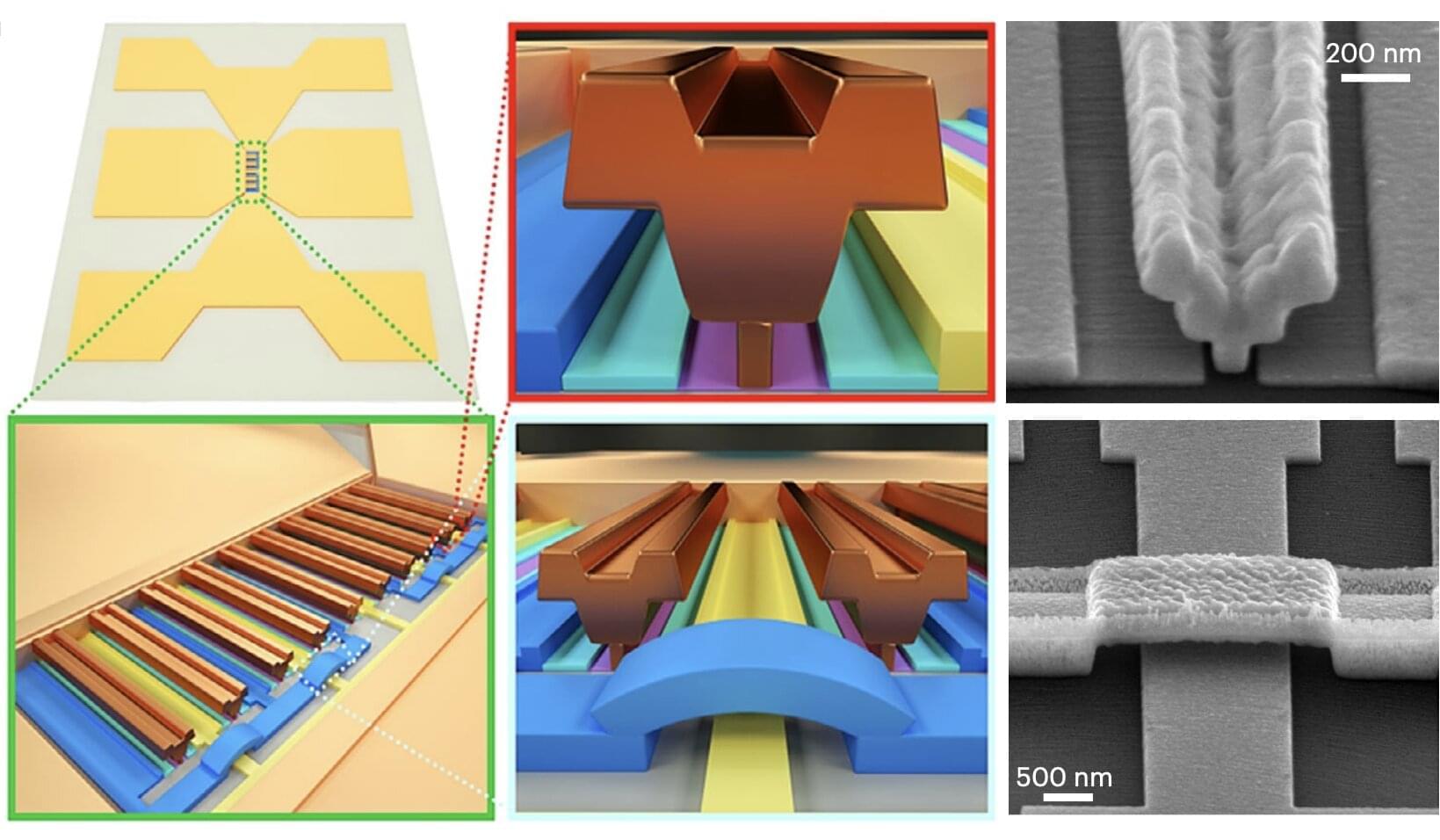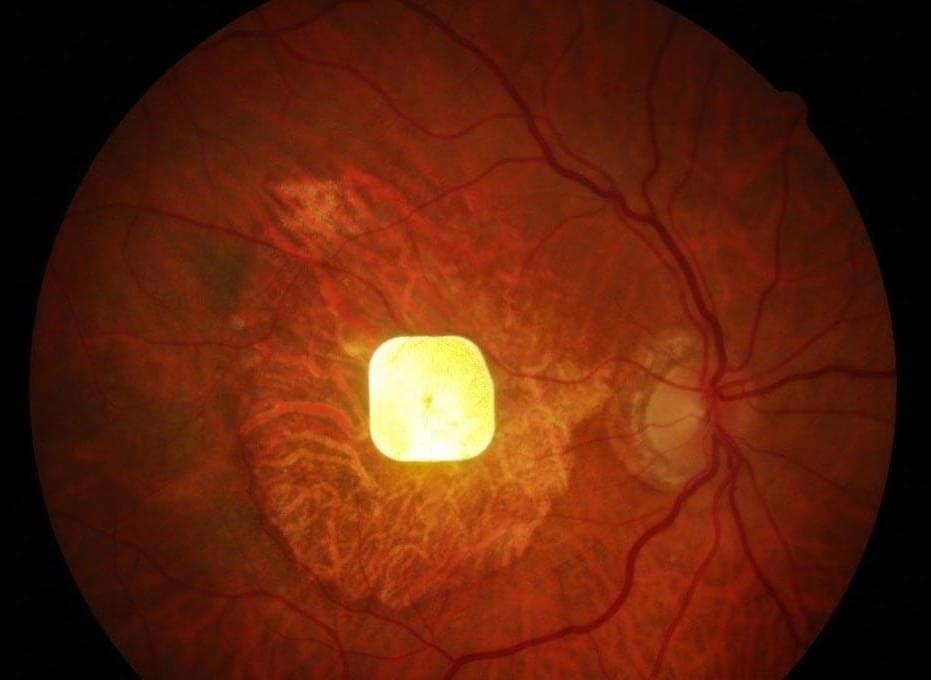A team of scientists has found a way to slow energy leaks that have impeded the use of tiny nanocrystals in light-driven chemical and energy applications.
As described in an article published in the journal Chem, the team has used a molecule that strongly binds to the nanocrystal’s surface, essentially acting like a dam to hold back the energy stored in the charge-separated state formed after light absorption. This technique extends the lifetime of the charge separation to the longest recorded for these materials, providing a pathway to improved efficiencies and more opportunities to put this energy to work in chemical reactions.
The researchers from the University of Colorado Boulder, the University of California Irvine, and Fort Lewis College were led by RASEI Fellow Gordana Dukovic.








